Wheels appear everywhere in today’s world, a testament to the evolution of the wheel that makes it impossible to imagine civilization as we know it without them. The idea seems quite simple and given the number of wheels we see in the world today, almost obvious. However, wheels emerged as a recent actor to appear on the worlds stage. Whereas many ideas’ stem from things found in nature, there are no wheels in the natural world. Evolution by natural selection would never select for it. The Earth’s natural landscape rigid and rough, not paved and flat.
The idea of the wheel developed in ancient Mesopotamia, which in time proved highly effective and rolled on throughout the Old World. There is no evidence of the wheel being used in the America’s prior to European contact despite the highly advanced civilizations of the Mayans, Aztecs, and Incas.
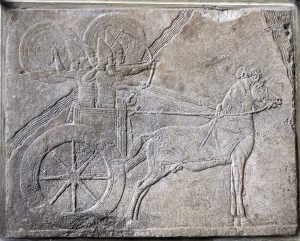
The Wheel’s Unexpected First Use
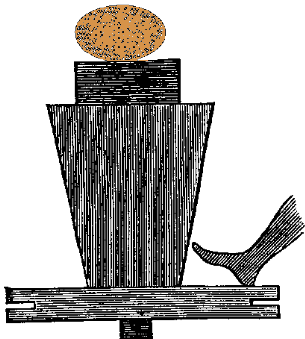
Most people think of the wheel as a component in a transportation device, but the evolution of the wheel actually began with pottery, its surprising first use. The wheel was invented and first used by ancient Sumerian potters (the same Sumerians who invented writing) during the late Neolithic period at around 3500 BCE. This exact date of its original use is a little uncertain, as is with many things in ancient history. It’s possible the idea was hit upon centuries earlier, but since nobody was around keeping detailed records we can’t be absolutely sure when it was first invented. However by 3500 BCE it was certainly in use in that region of the world. The device was extremely practical and quickly spread through cultural diffusion, however the Chinese also came across the idea of the wheel around 2800 BCE.
As valuable to civilization as the wheel is, one might think that it was of the first invention of human civilization But this isn’t the case, as this simple invention occurred well into the Bronze age. By this time more complex technologies like metallurgy were already established as an increasingly sophisticated, 2000-year-old science. Even pottery as a craft had been around for tens of thousands of years. So this is where the story of the invention of the wheel begins, as an artifact assisting in making pottery. The potter’s wheel was not a wheel used for rolling or moving things. It laid horizontally on its side while pottery was spun on top of it. The potter’s wheel was typically made from solid wood or stone and attached to a fixed axle, allowing for smooth, slow and controlled rotation.
The potters wheel quickly found new uses and it adapted those used to the urgent needs of civilization. During the late Neolithic period human societies were increasingly settling into agricultural communities and the need for more effective methods of labor and transportation became apparent. After the invention of the potters wheel, it only took another few centuries of innovation before the next generation of people assembled two wheels, rotated 90 degrees and placed an axle through the center of each. This process did not happen overnight, as in one swift stroke of genius. It was a gradual process that began with a rolling log and culminated with a rudimentary wheel and axle device.
However by around 3400 BCE the wheel was likely being used for transportation, at least in one part of the world. The first depictions of a wheeled vehicle were found in 1974 during an excavation of a neolithic village near the present day village of Bronocice, Poland. Found in a pit among animal bones was an artifact that has come to be known as the bronocice pot. The bronocice pot is a ceramic vase showing what appears to be a wheeled vehicle. The discovery shows that wheeled wagons were in use in Central Europe by this time. They were likely drawn by aurochs, the wild ancestor of domestic cows, as auroch remains were found in the same area. Clay tablets found in around 3200 BCE in Urak – present day Iraq – also show depictions of wheeled vehicles.
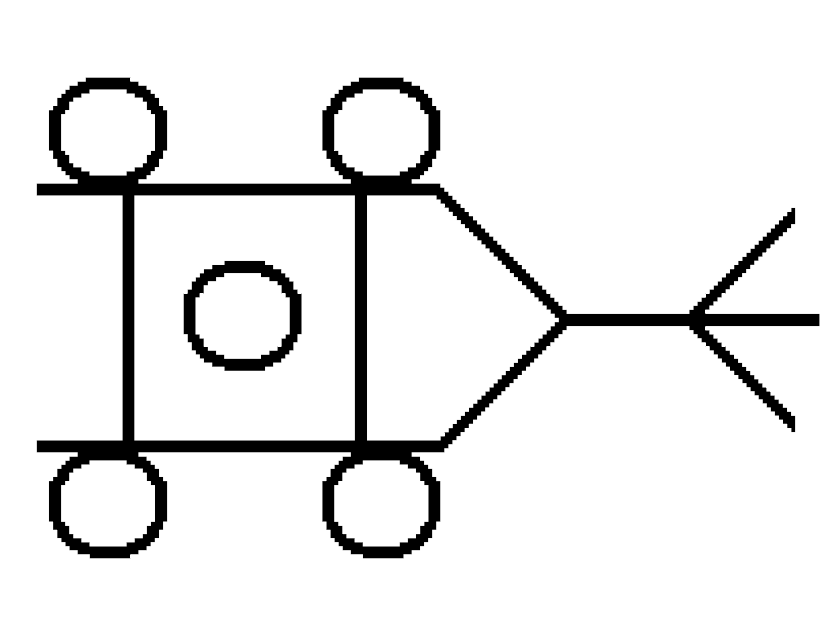
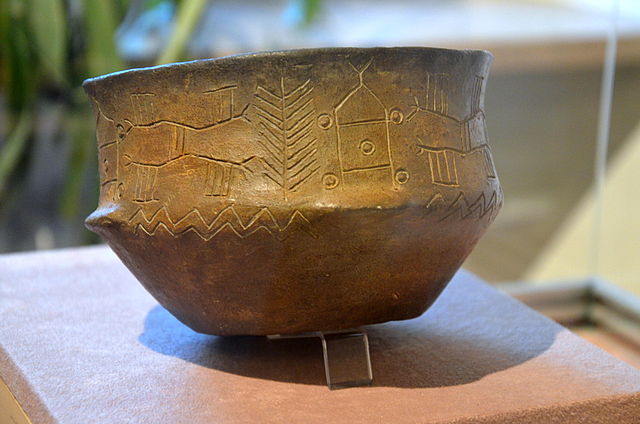
Once the wheeled vehicle arrived on the scene, the innovations continued. It could be connected to carts and eventually larger transportation vehicles called chariots. The transformation of the potter’s wheel to a transportation device was now complete. The transformation from a solid wooden wheel to today’s rubber tire was just beginning.
The Evolution of the Wheel: From Pottery to Powerhouse
The wheel has evolved substantially over its 5000 year history. It has become thinner and stronger, and has developed into different types. One of the first such evolution’s of the wheel was a plank wheel. The plank wheel is made from wooden planks rather than being one solid log of wood. As societies advanced the wheel continued to evolve to meet the needs and demands of society. Some wheels had parts of it that were able to be removed, making it lighter. The next major steps were hollowing out the center of the wheel and adding spokes radiating from the axle. The use of spokes reinforced the structure of the wheel and reduced its weight. It is believed to have originated in ancient Sumer around 2000 BCE. The spoked wheel eventually became used in chariots.
Additional features of the wheel continued to be modified or added to improve its performance. The concept of the rim, an outer edge of a wheel that holds it in place, dates back to ancient times as well. Rims provide structural support to make the wheels more durable. Early rims were made of wood or metal, and as metal-working become more sophisticated various other materials such as iron and steel were used. The wheel and axle also went through some changes. Originally the two were fixed, meaning that they rotated as a single unite. The design is simple but does not allow for much maneuverability. The fixed axles were modified into pivoting axles where the wheels can move independently of each other, increasing the vehicle’s maneuverability.
The biggest change in the evolution of the wheel came many thousands of years after its first use as a form of transportation, during the Industrial Revolution. The manufacture of wheels improved as cast iron, and later steel wheels greatly enhanced their performance, durability, and load capacity. This era also found many new uses, such as for trains or for components in factory machinery. The modern wheel of the 21st century continued to evolve as manufacturing techniques continue to improve and technology advances at a breakneck pace. Wheels were now mass produced for a variety of new vehicles such as cars and airplanes, and made from a variety of materials such as aluminum and rubber. The digital age has transformed wheeled vehicle technology and features such as traction control, anti-lock breaking systems, and advanced driver-assistance systems are becoming commonplace in vehicles. Currently, we are seeing the concept of “smart wheels” that incorporate electronic systems using sensors that monitor conditions such as tire pressure, tread wear, and temperature. New technologies like robotics are making wheeled robots a common sight in manufacturing plants and warehouses, and even in advanced space agencies such as NASA. As human civilization continues to push the limits of technology, the wheel will undoubtedly continue to be an integral part of that process.
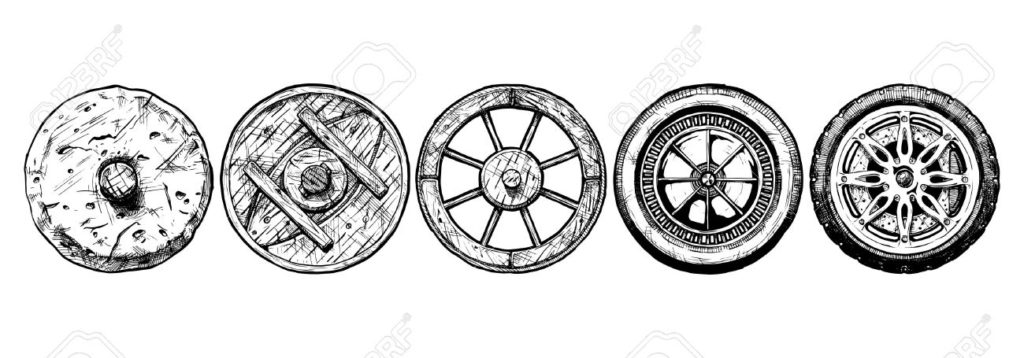
(Credit: www.123rf.com)
The Power Behind the Wheel
There are two main reasons why wheels make moving loads easier than pushing or pulling loads.
- Decreased friction – Only a small part of the wheel is in contact with the ground leading to increased efficiency and reduced wear and tear. Decreased friction also increases maneuverability making it easier to change directions. There are many methods to decrease the friction of the wheel such as optimizing the wheels design and materials used in construction, using lubricants, and minimizing the roughness of the surface that the wheel is being used on.
- Increased leverage – Wheels elevate the load reducing the angle at which force is required to move the load. Additionally, the rim of the wheel turns more distance than the axle of the wheel. Turn the wheel at the rim and more force is applied to the axle. Turn the wheel at the axle to create more speed.
The Wheel’s Impact on Early Civilizations
The wheel has played a significant part in shaping history and had a variety of early uses and forms. The first use was for pottery making – the pottery wheel. Although the most important use was for transportation. For thousands of years people dragged heavy things on sledges. Wheels changed this, and subsequently altered our terrain. Wheels work best when they have a smooth surface to roll on. The Romans were the first to institute large scale road construction to connect their large empire. They constructed thousands of miles of straight roads, some of which are still in use today.
The agricultural process also benefited from wheels in the form of improved food production, transportation, and distribution. The invention of wheeled plowing and tilling revolutionized the preparation of soil for planting. Carts and wagons allowed farmers to transport crops, seeds, and other agricultural goods over long distances with ease. With transportation now easier than ever, farmers had access to larger markets and an expansion of trade markets. The significant boost the invention of the wheel gave to agricultural production allowed for larger food surpluses, thus increasing population in urban centers.
People continued to find new and innovative uses for the wheel. They harnessed the energy of water and wind in the form of the waterwheel and the wind turbine. They added teeth to the wheel and created gears, an essential component in many mechanical devices.

(Credit: Jim Vallee)
For such a simple device, the evolution of the wheel keeps on spinning. Bicycles, trains, and automobiles all rely on the wheel for movement. But the wheel can be adapted for uses other than movement. Automobile engines depend on many wheels. One part of the engine is a crankshaft – a wheel with an off-center axle. This is spun to power the engine that spins the road tires. The wheel – found nowhere in nature – is certainly human’s greatest yet simplest innovative achievement.
Continue reading more about the exciting history of science!
This is a very interesting post, and I learned a lot from it. I’ve never thought of the history behind the wheel before. Thanks for sharing!
What a great history lesson about the evolution of wheels. This post has changed my appreciation and perspective for wheels. Thanks for sharing
Super interesting reading. It’s amazing how we just take things for granted without looking back at its history
The history behind the wheel is interesting to read!
Very interesting, thanks for sharing.